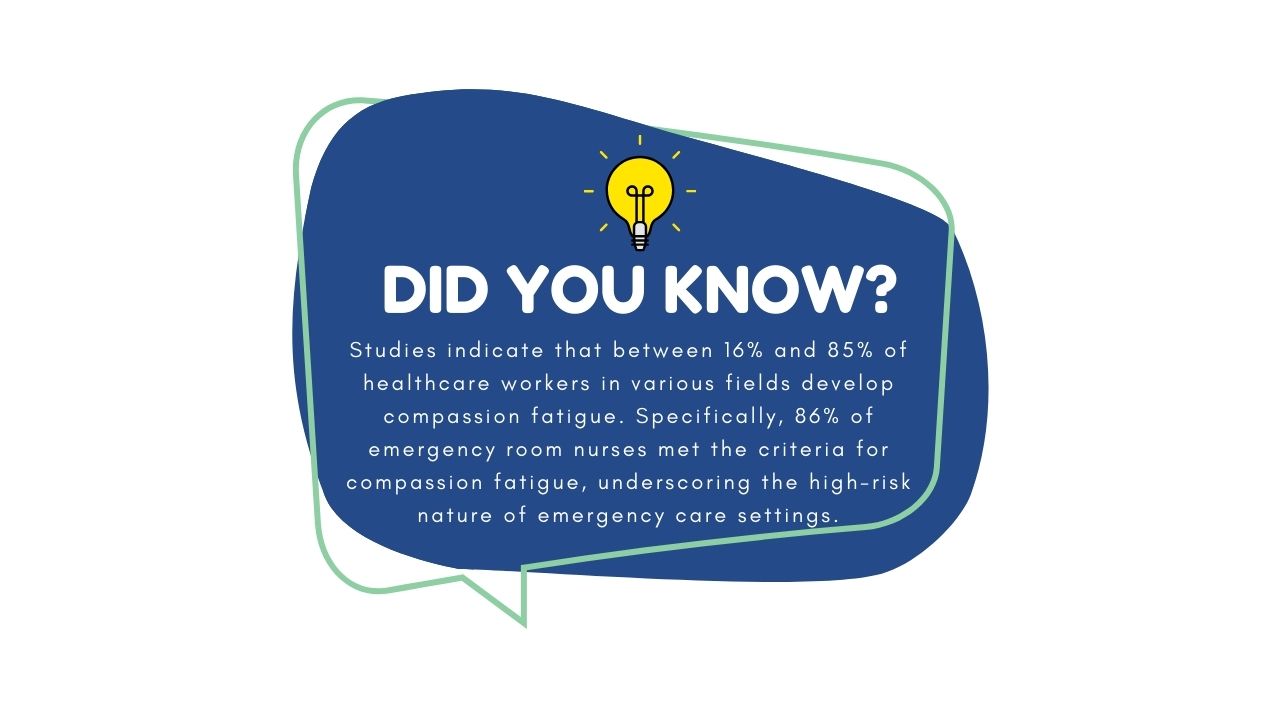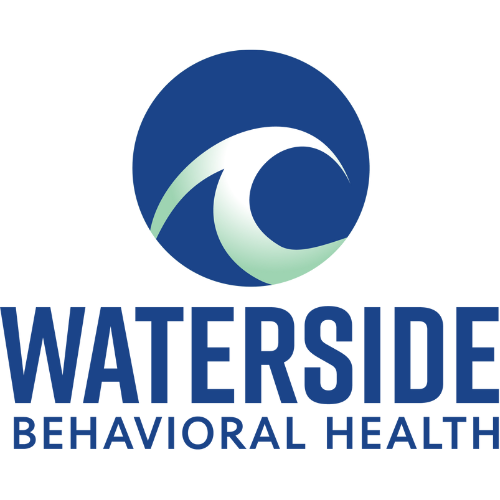Compassion fatigue is a widespread and often overlooked condition that affects individuals in caregiving roles, including healthcare workers, therapists, first responders, and even family caregivers. It goes beyond general stress or exhaustion, manifesting as emotional depletion, reduced empathy, and physical symptoms such as chronic fatigue, headaches, and difficulty concentrating. Compassion fatigue develops when the demands of supporting others become overwhelming, leading to burnout and a diminished ability to provide care effectively.
However, compassion fatigue is not permanent, and with the right support, individuals can recover and regain their emotional resilience. At Waterside Behavioral Health, we provide comprehensive mental health treatment programs in Massachusetts, including Cognitive-Behavioral Therapy in Massachusetts (CBT), Dialectical Behavior Therapy in Massachusetts (DBT), and Trauma Therapy in Massachusetts to help individuals overcome depression and find lasting relief.
This guide will explore the causes, symptoms, and treatment options for compassion fatigue, along with self-care strategies to promote emotional well-being and sustainable caregiving.
What is Compassion Fatigue: Understanding the Emotional Toll on Caregivers
Have you ever felt drained after caring for someone? Compassion fatigue is the emotional and physical exhaustion that occurs when helping others through their trauma or suffering. It happens when caregivers, healthcare workers, or even family members become overwhelmed by repeatedly exposing themselves to others’ distress, leading to a decreased ability to empathize or care.
This condition differs from burnout, though they share some similarities. Compassion fatigue often develops suddenly and specifically affects those in helping roles. It can lead to feelings of hopelessness, decreased job satisfaction, and even physical symptoms like headaches or sleep disturbances.
Many people experiencing compassion fatigue feel guilty about their emotions. They might think they’re not strong enough or dedicated enough to their work. Understanding this condition is the first step toward addressing it and finding balance in a caring role.
Key Takeaways
- Compassion fatigue is emotional exhaustion resulting from repeatedly helping others through trauma or suffering.
- The condition affects healthcare workers, counselors, family caregivers, and anyone regularly exposed to others’ distress.
- Recognizing early signs and implementing self-care strategies can prevent compassion fatigue from becoming severe.
Defining Compassion Fatigue
Compassion fatigue is a specific type of stress that affects helping professionals and caregivers who work with people experiencing trauma or suffering. It develops gradually through continued exposure to others’ pain and can lead to physical, emotional, and professional consequences.
Historical Context
The concept of compassion fatigue emerged in the early 1990s when researcher Charles Figley identified this phenomenon among healthcare workers. He noticed that professionals who regularly witnessed suffering often developed symptoms similar to those experienced by trauma survivors themselves.
Before being called compassion fatigue, similar experiences were described as “burnout” or “secondary traumatic stress.” The term gained wider recognition during the AIDS epidemic when healthcare workers reported feeling overwhelmed by constant exposure to patient suffering.
By the mid-1990s, compassion fatigue was recognized as an occupational hazard in nursing, emergency services, and mental health fields. Research in this area has expanded significantly over the past three decades.
Terminology and Concept
Compassion fatigue is sometimes called “the cost of caring.” It differs from burnout, which develops gradually from work-related stress and dissatisfaction. Compassion fatigue can occur suddenly and specifically relates to absorbing others’ trauma.
The concept involves two main components:
- Secondary traumatic stress: Experiencing trauma symptoms after being exposed to someone else’s suffering
- Burnout: Feeling overwhelmed, exhausted, and unable to meet constant demands
Key symptoms include:
- Emotional exhaustion
- Decreased empathy
- Sleep disturbances
- Intrusive thoughts
- Avoidance behaviors
This condition affects both professional and personal life. Healthcare workers, therapists, first responders, and family caregivers face the highest risk of developing compassion fatigue.

Causes of Compassion Fatigue
Compassion fatigue develops when caregivers and helping professionals experience emotional drain from constant exposure to others’ suffering. Several key factors contribute to this condition, affecting both work performance and personal wellbeing.
Emotional Impact of Caregiving
Repeated exposure to others’ trauma creates a heavy emotional burden. Caregivers often absorb the pain and suffering of those they help, leading to emotional exhaustion.
Healthcare workers, therapists, and social workers frequently witness distressing situations that can overwhelm their coping mechanisms. This phenomenon, sometimes called “secondary traumatic stress,” occurs when helpers internalize the trauma they witness.
The constant need to provide emotional support while maintaining professional boundaries creates internal conflict. Many professionals feel they must appear strong despite their own emotional struggles.
Common emotional impacts include:
- Feeling emotionally drained after work shifts
- Difficulty separating work concerns from personal life
- Intrusive thoughts about patients’ or clients’ suffering
- Diminished ability to feel empathy over time
High-Stress Work Environments
Workplace factors significantly contribute to compassion fatigue development. High patient loads and insufficient staffing create pressure that makes proper self-care difficult.
Long shifts and overtime requirements deplete physical and emotional resources. Many helping professionals face 12+ hour workdays with minimal breaks or recovery time.
Organizational policies that prioritize productivity over wellbeing can worsen the situation. When institutions lack supportive supervision or adequate resources, professionals feel unsupported.
Exposure to traumatic events or crisis situations without proper debriefing intensifies stress. Emergency responders, hospital staff, and disaster relief workers face particularly high risks.
Workplace cultures that discourage expressing emotional difficulties create isolation. When professionals cannot discuss their struggles, they often suffer silently.
Personal Vulnerability Factors
Individual characteristics affect how susceptible someone is to compassion fatigue. Previous personal trauma history can make professionals more vulnerable when exposed to others’ suffering.
Perfectionism and unrealistic expectations about one’s ability to help create additional pressure. Those who believe they should “save everyone” experience greater disappointment and stress.
Poor work-life boundaries make it difficult to recover from workplace stress. Professionals who remain mentally “on call” during personal time cannot fully recharge.
Limited social support systems increase vulnerability. Without friends, family, or colleagues to provide perspective, professionals lack vital emotional outlets.
Vulnerability is increased by:
- Insufficient self-care practices
- Limited coping skills for managing stress
- Tendency toward self-sacrifice
- Difficulty saying “no” to additional responsibilities
Symptoms and Indicators
Compassion fatigue manifests through distinct physical, emotional, and behavioral signs that develop gradually over time. Healthcare workers, first responders, and caregivers often experience these symptoms without recognizing their connection to their helping roles.
Physical Symptoms
Compassion fatigue often appears first in the body. People might experience constant tiredness that sleep doesn’t fix. Headaches and digestive problems like stomach pain or changes in appetite are common.
Many sufferers report muscle tension, especially in the neck and shoulders. Sleep disturbances become frequent – either trouble falling asleep or staying asleep throughout the night.
Some people develop a weakened immune system, getting sick more often than usual. Others notice increased heart rate, blood pressure changes, or even chest pain during stressful situations.
Physical symptoms sometimes include:
- Exhaustion and fatigue
- Insomnia or poor sleep quality
- Frequent headaches
- Gastrointestinal issues
- Increased susceptibility to illness
Emotional Symptoms
The emotional impact of compassion fatigue can be overwhelming. Many people feel a decreased sense of satisfaction in their work and question if they’re making a difference.
Emotional numbness is a protective response where people feel disconnected from others’ pain. This often comes with guilt about not caring enough. Irritability and anger may emerge, sometimes directed at patients, clients, or loved ones.
Warning signs include feelings of hopelessness about work situations and difficulty establishing boundaries. Some experience intrusive thoughts about traumatic events they’ve witnessed.
Anxiety and depression commonly accompany compassion fatigue. People describe feeling “on edge” all the time or experiencing unexplained sadness and emotional exhaustion.
Behavioral Changes
Compassion fatigue typically changes how people act at work and home. Many begin avoiding certain tasks, clients, or situations that trigger distress. Increased use of alcohol, drugs, or other substances may develop as coping mechanisms.
Work performance often suffers. Professionals might make more mistakes, miss deadlines, or struggle with concentration. Many become less engaged with colleagues and withdraw from team activities.
Personal relationships change too. People report:
- Withdrawing from family and friends
- Losing interest in previously enjoyed activities
- Becoming short-tempered with loved ones
- Neglecting self-care routines
Some develop rigid thinking patterns, seeing situations as black-and-white rather than recognizing complexity. Changes in communication style, like becoming more cynical or using dark humor, can signal compassion fatigue’s effects.
Impact on Professionals
Compassion fatigue affects professionals who regularly work with people in distress or trauma. The emotional toll varies across different helping professions but often includes burnout, decreased job satisfaction, and personal health problems.
Healthcare Workers
Healthcare workers face significant risks of compassion fatigue due to constant exposure to patient suffering. Nurses often report the highest rates, with studies showing 25-35% experience symptoms.
Physical signs include headaches, insomnia, and fatigue. Emotional indicators involve detachment from patients, irritability, and decreased empathy. This condition affects both job performance and personal wellbeing.
The COVID-19 pandemic intensified these effects. Healthcare workers reported unprecedented levels of stress while managing overwhelming patient loads and witnessing frequent deaths.
Hospitals with support programs show lower rates of compassion fatigue. Effective interventions include:
- Regular debriefing sessions
- Rotation of difficult assignments
- Mandatory time off
- Mindfulness training
Social Workers and Counselors
Mental health professionals absorb emotional trauma daily through their clients’ stories. This vicarious trauma accumulates over time, affecting their psychological health.
Social workers in child welfare and crisis intervention report the highest rates of compassion fatigue. Many describe feeling helpless when unable to fully resolve client problems despite their best efforts.
Professional boundaries become harder to maintain as compassion fatigue progresses. Many report thinking about clients outside work hours and having difficulty separating their personal and professional lives.
Career longevity concerns are significant. Up to 60% of social workers consider leaving the field within the first five years, with compassion fatigue cited as a primary reason.
First Responders
Police officers, firefighters, and paramedics routinely witness traumatic events firsthand. Their compassion fatigue often manifests as emotional numbing and hypervigilance.
The unpredictable nature of emergency work creates unique challenges. First responders must switch between high-alert situations and routine tasks, taxing their emotional regulation systems.
Many develop coping mechanisms that appear as callousness to outsiders. Dark humor and emotional distancing serve as protective barriers but can worsen compassion fatigue over time.
The stigma around mental health in these professions creates barriers to treatment. Many fear career consequences if they admit struggling with emotional responses to their work.
Successful departments implement peer support programs and regular psychological screenings to identify early signs of distress.
Effects on Personal Life
Compassion fatigue impacts individuals beyond their professional roles, creating significant disruptions in their home lives and social connections. The emotional toll can transform how people interact with loved ones and participate in everyday activities.
Relationship Strain
Compassion fatigue often leaves people emotionally drained, with little energy remaining for family and friends. When caregivers return home, they may feel empty and unable to engage in meaningful conversations.
Partners and children might notice increased irritability or emotional numbness. A parent experiencing compassion fatigue might stop attending their child’s sports games or skip family movie nights due to exhaustion.
Intimate relationships can suffer as physical and emotional intimacy decreases. Many caregivers report feeling disconnected from their partners, unable to share their experiences or listen to their partner’s daily concerns.
Communication patterns typically change, with more conflicts arising from misunderstandings and decreased patience. Simple disagreements may escalate quickly when someone is already emotionally depleted.
Social Withdrawal
People with compassion fatigue often begin avoiding social gatherings, finding them overwhelming rather than enjoyable. Birthday parties, neighborhood barbecues, and other events become sources of stress instead of pleasure.
Friends may notice the affected person declining invitations more frequently. Many individuals report feeling like they need to conserve their limited emotional resources.
Common signs of social withdrawal include:
- Canceling plans at the last minute
- Decreased engagement on social media
- Avoiding phone calls and messages
- Spending more time alone
This isolation typically worsens the condition, creating a cycle that’s difficult to break. Without social support, recovery becomes more challenging.
Hobbies and activities once enjoyed often fade into the background. Someone who previously loved gardening, playing music, or hiking might abandon these activities, further reducing opportunities for joy and connection.
Assessment and Measurement
Healthcare professionals can measure compassion fatigue through validated tools designed to capture its effects. These assessments help individuals recognize when they’re experiencing this condition and determine its severity.
Compassion Fatigue Scale
The Professional Quality of Life Scale (ProQOL) is the most widely used tool for measuring compassion fatigue. This 30-item assessment evaluates three key dimensions: compassion satisfaction, burnout, and secondary traumatic stress.
Healthcare workers typically complete the scale by rating their experiences on a 1-5 scale. The test takes about 10-15 minutes to complete and provides scores for each dimension.
Other established measures include the Secondary Traumatic Stress Scale and the Compassion Fatigue Self-Test. These tools help quantify symptoms and track changes over time.
Self-Assessment Tools
Several self-assessment options help individuals monitor their compassion fatigue levels between formal evaluations.
Warning signs checklist:
- Feeling emotionally exhausted or drained
- Decreased satisfaction with work
- Intrusive thoughts about clients/patients
- Sleep disturbances or nightmares
- Physical symptoms like headaches or digestive issues
Simple daily rating scales allow professionals to track their emotional state. Many find value in compassion fatigue journals where they document triggers, symptoms, and coping strategies.
Online self-assessments provide quick feedback and resources. These tools work best when used regularly to identify patterns and early warning signs before symptoms become severe.
Prevention Strategies
Preventing compassion fatigue requires intentional self-care practices and organizational support. These strategies can help caregivers maintain their well-being while continuing to provide quality care to others.
Healthy Work-Life Balance
Setting clear boundaries between work and personal life is essential for preventing compassion fatigue. Caregivers should establish specific work hours and stick to them whenever possible.
Taking regular breaks during the workday helps refresh the mind and reduce stress. Even short 5-minute breaks can make a difference in maintaining mental clarity.
Time management techniques like prioritizing tasks and delegating when appropriate can prevent feeling overwhelmed. Using tools such as calendars or apps to schedule both work responsibilities and personal activities ensures neither area is neglected.
Pursuing hobbies and interests outside of caregiving roles provides necessary mental distance and joy. Activities that have nothing to do with caregiving can offer refreshing perspective shifts.
Building Resilience
Daily self-care practices are fundamental to building resilience against compassion fatigue:
- Regular physical exercise
- Adequate sleep (7-8 hours)
- Nutritious meals
- Mindfulness or meditation
Mindfulness techniques help caregivers stay present rather than ruminating on past events or worrying about future outcomes. Even 5-10 minutes of daily meditation can strengthen emotional regulation.
Establishing realistic expectations about what can be accomplished prevents disappointment and burnout. Caregivers should acknowledge that they cannot solve every problem or heal every hurt.
Learning to recognize early warning signs of compassion fatigue allows for prompt intervention. Physical symptoms like headaches or emotional responses like irritability serve as important alerts.
Support Systems
Professional support through supervision or consultation provides valuable guidance and perspective. Regular meetings with supervisors or peers offer opportunities to process difficult cases.
Peer support groups connect caregivers with others who understand their unique challenges. Sharing experiences reduces isolation and normalizes the emotional impact of caregiving work.
Family and friends outside the helping profession offer different perspectives and emotional support. Maintaining these relationships provides balance and reminds caregivers of their identity beyond their professional role.
Some organizations offer Employee Assistance Programs (EAPs) that provide confidential counseling services. Taking advantage of these resources demonstrates self-awareness rather than weakness.
Management and Treatment
Managing compassion fatigue requires deliberate action through professional help, personal self-care habits, and workplace changes. These approaches work together to restore emotional balance and prevent burnout.
Professional Support
Seeking help from mental health professionals is crucial for managing compassion fatigue. Therapists trained in trauma can provide evidence-based treatments like Cognitive Behavioral Therapy (CBT) to address negative thought patterns.
Regular supervision with experienced mentors helps professionals process difficult cases and emotions. These sessions offer guidance and validation that can prevent isolation.
Peer support groups connect people experiencing similar challenges. Sharing experiences with others who understand creates a sense of community and normalizes feelings of fatigue.
Types of Professional Support:
- Individual therapy
- Clinical supervision
- Peer support groups
- Professional coaching
Self-Care Techniques
Physical self-care forms the foundation of compassion fatigue management. Regular exercise, adequate sleep (7-9 hours), and balanced nutrition provide energy to handle emotional demands.
Mindfulness practices help professionals stay present rather than ruminating on work concerns. Even brief daily meditation sessions (5-10 minutes) can reduce stress hormones and improve focus.
Setting clear boundaries between work and personal life is essential. This includes designated “no work” times, turning off notifications after hours, and taking full vacation time.
Effective Self-Care Practices:
| Practice | Benefit |
|---|---|
| Mindfulness meditation | Reduces stress response |
| Time in nature | Restores mental energy |
| Creative hobbies | Provides emotional release |
| Social connections | Counters isolation |
Organizational Interventions
Workplaces play a critical role in preventing compassion fatigue. Organizations should implement reasonable caseloads and adequate staffing ratios to prevent overwork.
Regular training about compassion fatigue helps staff recognize early warning signs. This education should include practical tools for managing emotional responses to difficult situations.
Creating dedicated spaces for rest and reflection allows professionals to decompress during the workday. Even short breaks can help reset emotional capacity.
Supportive leadership that models self-care and acknowledges the emotional challenges of helping professions sets an important tone. Leaders should normalize discussions about emotional impacts and encourage appropriate help-seeking.
Resources and Support
Finding help for compassion fatigue is essential for those in helping professions. Various resources exist to provide education, connection with others, and professional guidance.
Educational Workshops
Educational workshops offer structured learning about compassion fatigue and its management. These programs typically run from a few hours to several days and provide valuable information on recognizing symptoms and developing coping strategies.
Many healthcare organizations, social service agencies, and professional associations host these workshops. Some notable programs include the Compassion Fatigue Awareness Project and the Professional Quality of Life trainings.
Workshops often include practical tools such as:
- Self-assessment questionnaires
- Stress reduction techniques
- Boundary-setting exercises
- Self-care planning guides
Online options have become increasingly available, making education accessible regardless of location. Many workshops offer continuing education credits for professionals who need to maintain licensure.
Peer Support Groups
Peer support groups connect individuals experiencing similar challenges. These groups create safe spaces for sharing experiences, strategies, and encouragement without judgment.
Some groups meet in person at workplaces or community centers, while others gather virtually. Both formats provide valuable opportunities for connection.
Benefits of peer support groups include:
- Validation of experiences
- Reduction of isolation feelings
- Exchange of practical coping strategies
- Development of professional networks
Many hospitals, social service agencies, and educational institutions offer formal peer support programs. For those without access to established groups, online communities on platforms like Facebook or professional networking sites can serve similar purposes.
Counseling Services
Professional counseling provides individualized support for those experiencing compassion fatigue. Therapists with expertise in trauma and occupational stress can offer targeted interventions.
Many workplaces now offer Employee Assistance Programs (EAPs) that provide free or reduced-cost counseling sessions. Health insurance plans typically cover mental health services, though coverage varies.
Therapists may use various approaches to address compassion fatigue:
- Cognitive Behavioral Therapy to address negative thought patterns
- Mindfulness practices to increase present-moment awareness
- Trauma-informed care for those with secondary traumatic stress
- Solution-focused therapy to develop practical coping mechanisms
Both in-person and telehealth options make counseling more accessible than ever before. Regular sessions can help professionals process experiences and develop sustainable self-care practices.
Future Directions
Understanding compassion fatigue and developing strategies to manage it remains an ongoing challenge. New research and policy approaches are emerging to better support those in helping professions.
Research Trends
Scientists are exploring the biological markers of compassion fatigue through brain imaging and stress hormone testing. These methods may help identify who is at risk before symptoms become severe.
Digital monitoring tools are being developed to track emotional well-being in real time. These apps can alert users when their stress levels indicate potential compassion fatigue.
Cross-cultural studies are expanding our understanding of how compassion fatigue manifests differently across societies. This research shows that cultural factors influence both vulnerability and resilience.
Longitudinal studies following healthcare workers throughout their careers are providing insights into how compassion fatigue develops over time. These studies may reveal critical intervention points.
Research is also focusing on the connection between personal trauma history and compassion fatigue risk, suggesting targeted approaches for different populations.
Policy Implications
Healthcare organizations are beginning to implement mandatory rest periods between high-stress assignments. This “emotional recovery time” is becoming standard in progressive institutions.
Insurance companies are expanding mental health coverage specifically for helping professionals. This trend recognizes the occupational hazard of emotional exhaustion.
Universities are revising training programs to include compassion fatigue prevention as a core competency. Students now learn self-care alongside clinical skills.
Professional licensing boards in some regions now require continuing education in self-care and compassion fatigue management. This policy acknowledges the importance of provider wellbeing.
Government agencies are developing workplace standards that limit exposure to traumatic material. These regulations aim to create sustainable careers in high-stress fields.
Frequently Asked Questions
Compassion fatigue raises many important questions for those who work in helping professions. Understanding its symptoms, treatment options, and impact on both professional and personal life can help individuals take appropriate preventive measures.
How can one recognize the symptoms of compassion fatigue?
Physical symptoms of compassion fatigue include constant fatigue, sleep problems, and frequent headaches or digestive issues. These physical signs often appear gradually and may be dismissed as ordinary stress.
Emotional indicators include feeling numb to others’ pain, increased irritability, and a sense of hopelessness about one’s work. Many people also report intrusive thoughts about traumatic events they’ve witnessed.
Behavioral changes might involve withdrawing from social activities, overusing substances, or making more mistakes at work. Changes in work habits, such as arriving late or calling in sick more often, can also signal compassion fatigue.
What strategies are effective for managing compassion fatigue in the healthcare industry?
Setting clear boundaries between work and personal life helps healthcare workers prevent compassion fatigue. This includes taking full breaks, leaving work on time, and not taking emotional burdens home.
Self-care practices like regular exercise, proper nutrition, and adequate sleep provide a physical foundation for emotional resilience. Many hospitals now incorporate mindfulness programs that teach present-moment awareness techniques.
Professional support through regular supervision and peer support groups allows healthcare workers to process difficult cases. Some facilities offer specialized compassion fatigue interventions such as resilience training programs.
In what ways does compassion fatigue differ from burnout, and how can they be distinguished?
Compassion fatigue develops specifically from empathizing with others’ suffering, while burnout can result from any high-stress work environment. This key difference explains why compassion fatigue affects helping professionals more frequently.
Burnout typically builds gradually over time from workplace stressors like heavy workloads or lack of resources. Compassion fatigue, however, can develop suddenly after exposure to a traumatic event or patient story.
Recovery approaches differ slightly as well. Burnout often requires organizational changes, while compassion fatigue may respond better to trauma-informed interventions that address secondary traumatic stress.
What are specific examples that illustrate the impact of compassion fatigue on professionals?
A nurse who once spent extra time with patients might begin rushing through interactions to avoid emotional connection. This withdrawal behavior protects against further emotional drain but reduces care quality.
Teachers dealing with traumatized students sometimes report taking home students’ problems, leading to sleep disruption and relationship strain. Their effectiveness in the classroom diminishes as they become emotionally exhausted.
Crisis hotline workers may develop a diminished capacity to empathize with callers over time. Some report answering calls mechanically rather than with genuine concern, which compromises their effectiveness.
At what point should an individual seek professional treatment for compassion fatigue?
Professional help becomes necessary when self-care strategies fail to improve symptoms after several weeks. This persistent nature of symptoms despite intervention signals a need for specialized support.
When compassion fatigue significantly impairs work performance or leads to thoughts of leaving one’s profession, treatment is strongly indicated. Many professionals benefit from trauma-informed therapy approaches.
If symptoms expand to include anxiety, depression, or substance misuse, immediate professional intervention is crucial. These complications require specialized mental health treatment to prevent further deterioration.
Can compassion fatigue affect personal relationships, and if so, how?
Compassion fatigue often causes emotional exhaustion that extends beyond work settings. Family members may notice their loved one becoming emotionally distant or irritable without apparent cause.
Many helping professionals report having “nothing left to give” at home after emotionally demanding workdays. This emotional depletion can lead to conflict with partners who feel neglected or unimportant.
Children of those experiencing compassion fatigue may sense the emotional unavailability of their parent. Some professionals develop protective emotional numbness that unintentionally creates barriers in their closest relationships.
What are the best treatment options for overcoming compassion fatigue?
Compassion fatigue is an emotional and physical exhaustion that occurs when individuals in caregiving roles—such as healthcare workers, therapists, social workers, and first responders—become overwhelmed by the suffering of others. It can lead to feelings of detachment, burnout, and a diminished ability to provide care effectively. Without intervention, compassion fatigue can negatively impact mental health, relationships, and overall well-being. Fortunately, several therapeutic approaches can help individuals recognize and manage compassion fatigue while restoring emotional resilience.
Effective Therapy for Compassion Fatigue Includes:
-
Cognitive-Behavioral Therapy (CBT) – Helps individuals reframe negative thought patterns, manage stress, and develop healthier coping strategies.
-
Dialectical Behavior Therapy (DBT) – Teaches emotional regulation, mindfulness, and distress tolerance, helping caregivers balance their own well-being while supporting others.
-
Trauma Therapy Program – Addresses the emotional impact of witnessing or absorbing others’ pain, helping individuals process secondary trauma and build resilience.
-
Eye Movement Desensitization and Reprocessing (EMDR) – Assists in reprocessing distressing experiences that contribute to emotional exhaustion, reducing the impact of traumatic caregiving experiences.
-
Medication Management – In cases where compassion fatigue leads to anxiety or depression, medication such as SSRIs or mood stabilizers may help support emotional well-being.
Recovering from compassion fatigue is possible with the right support and strategies. At Waterside Behavioral Health, we offer personalized treatment programs in Massachusetts designed to help caregivers restore balance, prevent burnout, and continue their vital work with renewed energy and purpose.




